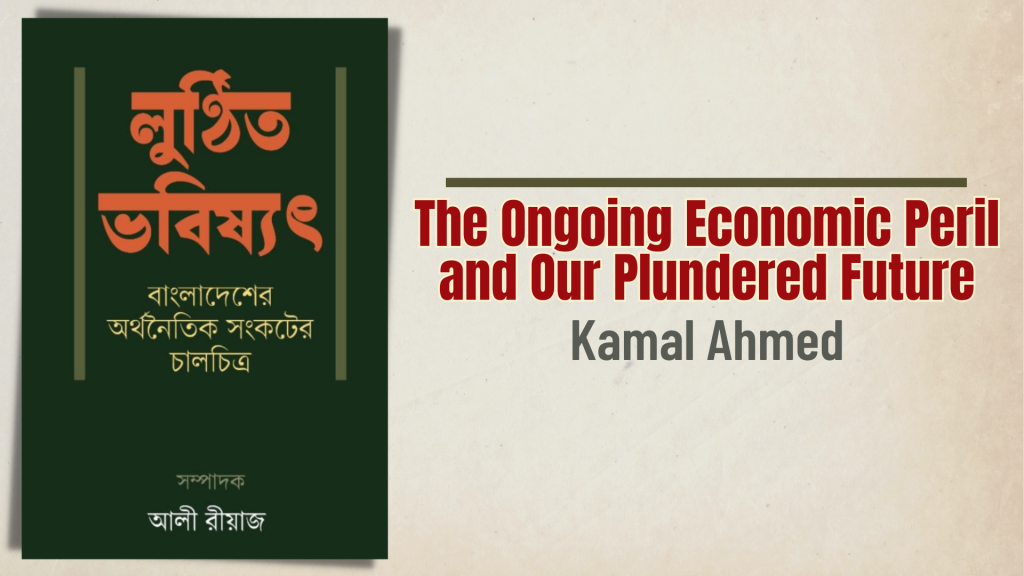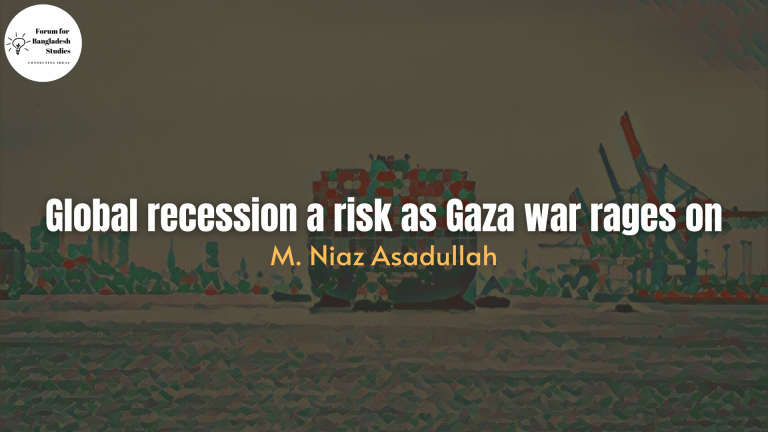On March 2, 2023, this daily reported that Moody’s, a major global rating agency, had downgraded its outlook of Bangladesh’s banking system from stable to negative. The report called this ‘a crushing development’ making ‘foreign transactions trickier and costlier for businesses and banks.’ It also noted that the latest downward revision came after the lowering of ratings of the Social Islami Bank and putting up the ratings of seven Bangladeshi banks’ under review for downgrades in December.
Reading the story took me back to a recently published book titled ‘Lunthito Bhabishyat: Bangladesher Orthonaiitik Shonkoter Chaalchitra’ (A Plundered Future: The Realities of the Bangladesh’s Economic Crisis), in which Zia Hasan, a well-known researcher on development and economics, examined what prompted international financial institutions and rating agencies change their assessments of Bangladesh economy within a few months.
Hasan, in his essay, argues that though Moody’s announcement of placing Bangladesh’s Ba3 rating under review for downgrade was made on December 9, 2022, the crisis originated years ago with careless spending and reckless borrowing from both domestic and international sources. He argues that the economy has been facing far greater risks than what national and international institutions have been projecting. According to Hasan, most of us have been focusing on three known issues: loan-GDP ratio, interest liability (which has reached about 20 percent of the revenue), and expected higher liability of paying off new interests and loan instalments. But, there are three kinds of risks – known known risks, known unknown risks and unknown unknown risks – and the last two risks are being largely ignored in most of the assessments.
The author shows how seriously flawed our calculations of GDP are and how such inflated figures mislead other economic measurements. He points out that there are some sizable domestic and foreign liabilities that had not been taken into account, thereby understating some unavoidable consequences. By the time we would realise the actual gravity of the crisis, it would be too late, Hasan claims.
Hasan’s forensic examination of the state of the government exchequer is a part of the book. Ali Riaz, the book’s editor,a distinguished professor of politics at the Illinois State University In the US, explains in his introductory note how Bangladesh, with gradual weakening of governance, accountability and the rule of law – which he describes as a ‘slow-burn’ process – has reached the current stage. Riaz argues that since 2014, two controversial elections resulting in parliaments without an effective opposition meant none of the economic and governance issues have been meaningfully debated. Besides, concentration of unaccountable power has resulted in the creation and consolidation of a few cronies who have built their wealth enormously, and many of them have transferred assets abroad.
This book has four other critical reviews on a few other crucial issues: robbing of the banking sector, aggravating the national economy; unaccountable and unabated corruption in the power sector building up huge liability for the state exchequer; the government’s development philosophy that reflects its fascination with mega projects; and phenomenal growth in money laundering by cronies of the powerful elite.
Once you read this book, everytime you come across a story on defaulted loans, management failure of bankers, political interference in banking, directors abuse of their positions, their influence over the administration or inability of the regulators, you will understand how we ended up here. Shawkat Hossain, head of online at the daily, Prothom Alo, takes us through the evolution of banking in the country, both under public and private ownerships, and tells us how the robbing of banks transformed from using guns to gaining control of the board room over the last five decades
He compiles most of the violations of rules in sanctioning and disbursing loans, validated afterwards with political interventions to the extent that required changing laws as many times as those offenders wanted to have. These changes include defining loan defaults, limitations on holding directorships and day-to-day management of banking services. Reading Shawkat’s analysis reminded me one of the reports published in this daily about the International Monetary Fund’s (IMF) diagnosis of the problems in the banking system, including the high volume of defaulted loans, as one of the three domestic risks that derail the economy in the short- to medium-term.
Another insightful analysis in this book is about the power sector, which, according to its writer Ismail Ali, chief reporter of the daily, Share Biz, identifies as one of the root causes of the current economic peril. Using the available official data, he scrutinised rationales for paying capacity charges, tax exemptions and land allocations at cheaper rates, who have benefitted from all these special favours, wider variations in cost calculations, discounts on domestic loans and the piling up of foreign debts. His dissection of the so-called quick rental contracts detects several follies, including paying the price for power to local independent producers in foreign currencies. He argues that it has facilitated transfer of wealth abroad. He also argues that the so-called inflated and unrealistic capacity charge agreed upon with India’s Adani Group would only benefit the billionaire. Ismail says that the indemnity act enacted to protect everyone involved in decision making in the power sector has resulted in reckless and to some extent anti-national contracts.
Professor Ali Riaz in his scholarly piece examines the development principles of the Awami League government, in which a clear trend has emerged showing its emphasis on mega projects. The objective is to make development projects more visible than their cost-benefit analysis. He draws lessons from global experiences, including those of the US and China, and identifies some fundamental weaknesses including reckless spending, high level of corruption and lack of accountability, which have contributed to the growing debt liabilities. A comparison between all mega projects in Bangladesh with similar projects in other countries would certainly make one aware of the absence of accountability and democratic governance.
The final chapter of the volume is an overview of money laundering abroad, the government’s inaction and its political association. This chapter is written by Tarique Chayan, a senior reporter at the daily, Manab Zamin, in which he argues that political patronisation is the main reason that enables the powerful and corrupt elites to launder their ill gotten wealth in safe havens and discourages, if not prevents, the Anti-Corruption Commission (ACC) take any effective role to tackle it. Though the available data showed a three-fold increase in laundering between 2004 and 2015, the actual level of the asset flight is thought to be much higher.
Learning these facts together may not be a happy reading and certainly is a depressing exercise, but is essential to comprehend what is happening in the country’s economy.
First Published : The Daily Star, March 10, 2023




